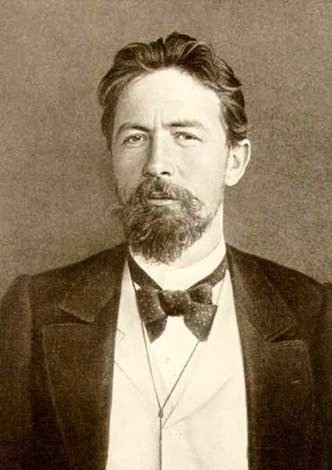The Fan's Guide to the Elements of Writing: Chekov's (or John Watson's) Gun
As I've gone through writing courses, I've learned a great deal about seemingly simple devices that recur in many works and that can prove very useful, whether you're analyzing a story or writing one of your own. This is the first in what will be a recurring series on The Storyologist: The Fan's Guide to the Elements of Writing. We're going to look at these devices and their uses through the lenses of films, TV shows, books, and theater that many of you are probably familiar with.We're going to start with a very well-known device used in foreshadowing: Chekov's Gun. Or, as I'm going to look at it here, John Watson's Gun.
Now, you've probably all heard the term before, especially if you've taken an English literature or creative writing class, but maybe you're not entirely clear on what it actually means.
First things first: meet Anton Chekov:
 |
| Image of Anton Chekov, unknown portraitist, public domain image |
Handsome devil, isn't he? But why is this device named for him? Because Chekov once famously said that if you show a gun on a table in Act 1, somebody had better get shot with it in Act 3.
In other words, it's a type of foreshadowing: You don't just put something there to fill up space and then ignore it for the rest of the story. If you "zoom in" on it, there's a reason for it. This device is a very specific form of foreshadowing: it tends to be about a particular object that starts out barely noticed, but returns in some significant capacity later on. It isn't an event that foreshadows another event- that's just plain old foreshadowing.
Here's the example I used to explain the concept to my fellow students during a class discussion. Now pay attention, kids, 'cause this one is in fact the idea that got this whole series started.
(The usual disclaimer: Sherlock belongs to BBC, Steven Moffat, Mark Gatiss, et al. I do not own any of the GIFs or clips used here; all rights to their proper owners. This is for educational purposes).
In the first episode of Sherlock, "A Study in Pink," the very first thing we see is Dr. John Watson, having a PTSD-induced nightmare about his time in battle. When he wakes up and sits up in bed, John has to take a few steadying breaths. He is clearly not alright. As he recovers, he opens a drawer and this is what we see:
 |
| Screencap (c) BBC/Sherlock |
Got it? Remember that. Okay, moving on.
Alright then, so now we arrive at the climax of the episode. Sherlock has been taken by the psychotic cabbie, about to take the potentially deadly pill, and John is desperately trying to find and help him. Then, at the last possible moment, the cabbie falls to the floor, felled by a very well-shot bullet. And then we see the responsible party:
 |
| Screencap (c) BBC/Sherlock |
And what's in his hand? The very same gun we saw a minute or two into the episode, lying in his drawer.
So there you have it: a (rather literal) example of Chekov's gun. Or in this case, Watson's gun.















0 comments: